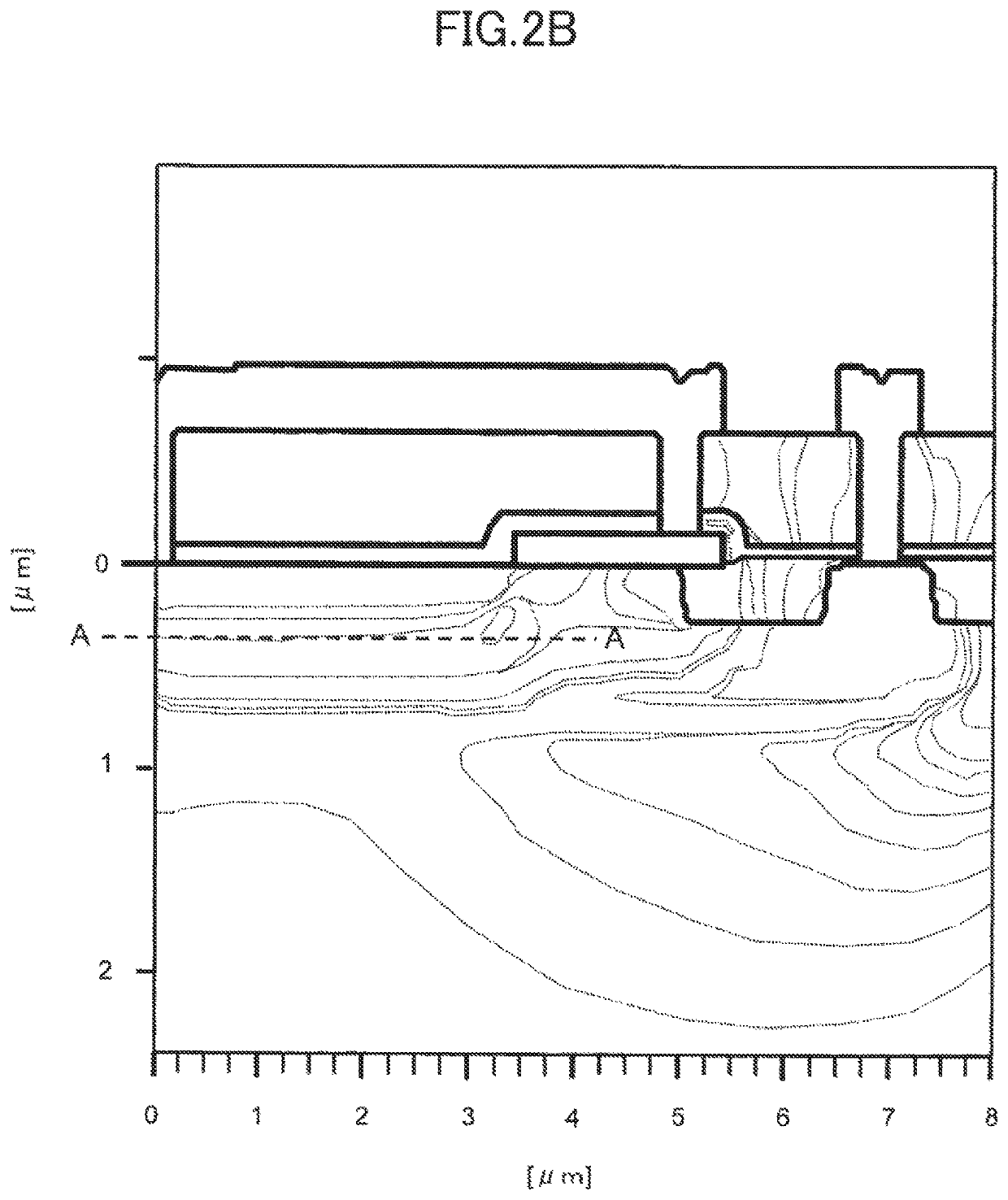Avalanche photodiode
a photodiode and avalanche technology, applied in the direction of diodes, semiconductor devices, electrical equipment, etc., can solve the problems of increasing the noise of dark count, breaking down first in the corner portions, etc., to avoid the breakdown of the edge and the generation of noise of the tunneling mode, and uniform operation, the effect of uniform distribution of electric field strength
- Summary
- Abstract
- Description
- Claims
- Application Information
AI Technical Summary
Benefits of technology
Problems solved by technology
Method used
Image
Examples
first embodiment
[0050]An avalanche photodiode according to the first embodiment of the present invention will be specifically described with reference to FIG. 1.
[0051]FIG. 1 is a sectional view of the avalanche photodiode according to the first embodiment of the present invention. In this avalanche photodiode, within a silicon semiconductor substrate 1, which, for example, has a plane orientation of (100) and a resistivity of about 10 Ωcm and is of P type, a low-concentration P-type diffusion layer 2 is formed, which serves as a P-type diffusion layer of an avalanche junction. This low-concentration P-type diffusion layer 2 is formed by ion implantation of boron (11B+). For example, boron (11B+) is implanted under the following three-stage ion implantation conditions.
[0052]
[Ion implantation energy][Dose]200 keV 2.5E+12 cm−250 keV2.5E+12 cm−235 keV1.0E+13 cm−2
[0053]Incidentally, the dose is described with floating-point representation in which an exponential base of 10 is represented by symbol E. Fo...
second embodiment
[0080]An avalanche photodiode according to a second embodiment of the present invention will be described with reference to FIG. 4. The basic configuration is the same as in the first embodiment. This avalanche photodiode according to the second embodiment has the same configuration as in the avalanche photodiode according to the first embodiment except for an N-type buried diffusion layer 25.
[0081]In the avalanche photodiode according to the second embodiment, the N-type buried diffusion layer 25 forming the avalanche junction is formed smaller than, in plan view for the substrate, the bottom portion of the low-concentration P-type diffusion layer 2.
[0082]As in the first embodiment, even when the N-type buried diffusion layer 5 forming the avalanche junction is formed larger than the low-concentration P-type diffusion layer 2, as long as it is substantially not connected to the N-type diffusion layer 3, the potential does not automatically become high, so that the above-described a...
third embodiment
[0085]An avalanche photodiode according to a third embodiment of the present invention will be described with reference to FIG. 5. The basic configuration is the same as in the first embodiment. The difference from the avalanche photodiode according to the first embodiment is another high-concentration N-type buried diffusion layer 35 formed between the N-type diffusion layer 3 serving as the cathode diffusion layer and the N-type buried diffusion layer 6. This N-type buried diffusion layer 35 is an example of the fourth second-conductivity-type semiconductor layer.
[0086]As described in the end of the first embodiment, when the N-type buried diffusion layer 6 is formed at a high ion implantation energy and, as a result, formed at a deep position, the contact concentration between the N-type diffusion layer 3 and the N-type buried diffusion layer 6 becomes low, and the isolation strength between the low-concentration P-type diffusion layer 2 and the P-type semiconductor substrate 1 b...
PUM
| Property | Measurement | Unit |
|---|---|---|
| resistivity | aaaaa | aaaaa |
| gap width | aaaaa | aaaaa |
| thickness | aaaaa | aaaaa |
Abstract
Description
Claims
Application Information
 Login to View More
Login to View More - R&D
- Intellectual Property
- Life Sciences
- Materials
- Tech Scout
- Unparalleled Data Quality
- Higher Quality Content
- 60% Fewer Hallucinations
Browse by: Latest US Patents, China's latest patents, Technical Efficacy Thesaurus, Application Domain, Technology Topic, Popular Technical Reports.
© 2025 PatSnap. All rights reserved.Legal|Privacy policy|Modern Slavery Act Transparency Statement|Sitemap|About US| Contact US: help@patsnap.com



